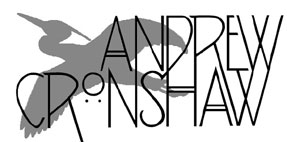
- Andrew Cronshaw website -
- Andrew Cronshaw MySpace -
- Cloud Valley Music website -
- Andrew Cronshaw website -
- Andrew Cronshaw MySpace -
- Back to Reviews Introduction page -
Written in Folk Roots issue 132, 1994
VARIOUS ARTISTS
Entiset Etniset - Historical direct disc recordings of Finnish folk music
1935-1954
Kansanmusiikki-instituutti KICD 29 (1993)
EINO TULIKARI
Traditional Finnish kantele music
Kansanmusiikki-instituutti KICD 1 (1993)
AARNION SISARUKSET (The Aarnio family band)
Hameen Polkka; Finnish folk music from the 1930s
Kansanmusiikki-instituutti KICD 28 (1993)
RÖNTYSKÄ
Röntyskä Songs
Mipu Music MIPUCD 203 (1993)
From 1935 until 1954 performances for A.O.Väisänen's Finnish radio programme
Puoli tuntia kansanmusiikkia ("Half an Hour of Folk Music") were
pre-recorded on 8-minute acetates. Most of these were scrapped after use, but a
random selection were preserved, and selected items have now been No-Noise
reprocessed and released on CD as Entiset Etniset. The result is a
collection of music, much of it unheard since the 30s, produced by rural
traditions around Finland before the Winter War changed everything - kantele
masters such as the Karelians Vanja Tallas and Antero Vornanen, Ingrian-born
wind-instrumentalist Teppo Repo, singers in the old styles, a scattering of
ocarina, clarinet, harmonium and melodeon, and of course fiddlers.
Eino Tulikari appears too, but there are more
recent recordings of him, in fact a whole LP, made in 1975 in the front room of
the Folk Music Institute's beautiful wooden Pelimannitalo at Kaustinen, when
this leading exponent of the still-flourishing Perho River Valley style of
kantele playing was 70. (This CD reissue of that album adds four tracks from a
recording made for radio twenty years earlier.) He played the large "board
kantele"; in his Ostrobothnian regional style it's played with the shortest
string toward the player and without damping. On record, the sound is
attractively music-box-like, but the intricate and ingenious techniques Tulikari
used in these tunes, largely polkkas, marches and waltzes, are a continuing
strong influence on today's players, and to see someone today using what he had
a major hand in developing makes clear how important he was. Kantele is music
for the eyes as well as the ears.
Incidentally, I'm not a harp player but it occurs
to me that some kantele techniques, particularly the ways of slipping across
strings for fluid fast playing and grace-note turns, might be worth the
attention of those who are.
The Aarnio Family Band album is also compiled
from acetates from Väisänen's radio programme. Until this century instrumental
folk music was played solo; folk bands didn't really exist until after the
1940s, though there were popular music dance bands and a considerable brass band
tradition. Nevertheless, in a home with a number of instrumentalists it was
natural that they'd play together. The Aarnio family, from Humppila, SW Finland,
started performing in ceremonial wedding plays, with an unusual line-up
featuring Väinö Aarnio on clarinet, fiddle and occasional ocarina and his
sisters Lempi on fiddle and Hilja on a 24-string kantele (played in the
hand-damping, strummed chordal style very unlike Tulikari's, but still with
shortest string nearest the player). A third sister, Rauha, played fiddle in the
band too but not on these recordings, made in 1936 and 1941. The material here
is virtually all polkkas and waltzes, with three mazurkas and a polska, with
some influence evident from brass band music, perhaps partly because of Väinö's
earlier experience playing cornet. His fiddle solos in particular show him to
have been a very able and lively musician.
The recordings of the Röntyskä group of women
singers from Rappula in Ingria (the Finno-Ugrian territory in the part of Russia
between Finland and Estonia at the head of the Gulf of Finland) aren't from the
archives but were made in 1993 of a group formed by Hilma Biss in 1977 on her
return from deportation to Siberia and a stay in Karelia to sing the old songs
from her home region - ring dances and game songs. The Röntyskä song, a quick
2/4 or 4/4 ring dance after which the group is named, is of antiphonal form; the
leader sings a couple of lines of usually light-hearted lyrics reflecting
village life and the group repeats them, in unison, sometimes adding a refrain.
The singing is straightforward, without grace-noting or harmony, and the main
interest of this album, while it has unpretentious charm, probably lies for most
listeners largely in the material. The Ingrian tradition is continuous with that
of Finland, but until recent developments communication and movement across the
border were difficult. Now this group's songs, some of which arrived in Ingria
from Finland in the first place, are finding their way back into the repertoire
of Finnish musicians.
© 1994 Andrew Cronshaw
You're welcome to quote from reviews on this site, but please credit the writer
and fRoots.
Links:
fRoots - The feature and
review-packed UK-based monthly world roots music magazine in which these reviews
were published, and by whose permission they're reproduced here.
Kansanmusiikki-instituutti (Finland's national Folk Music Institute).
Helsinki's Digelius Music
record shop is a great source of Finnish roots and other albums.
CDRoots.com in the USA, run by
Cliff Furnald, is a reliable and independent online retail source, with reviews,
of many of the CDs in these reviews; it's connected to his excellent online magazine
Rootsworld.com
For more reviews click on the regions below
NORDIC
BALTIC
IBERIA (& islands)
CENTRAL & EASTERN EUROPE, & CAUCASUS
OTHER EUROPEAN AMERICAS OTHER, AND WORLD IN GENERAL
- Back to Reviews Introduction page -